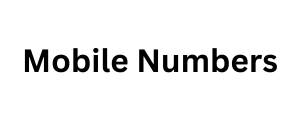process for B2B audiences takes much longer. They need to trust the company and be sure of its knowledge and authority before making a purchase. This means B2B digital marketing tactics need to educate and inform, rather than entertain like B2C tactics. All this said many businesses have both B2B and B2C marketing strategies. Amazon is a great example of this. The eCommerce giant advertises products on its site to individual consumers. But all those products are from individual sellers. So Amazon also has digital marketing efforts geared towards encouraging sellers to sign up with them to sell their products. One of the best ways to highlight the differences between B2B marketing and B2C marketing is by using an online marketing funnel.
B2C Chances are if been in marketing for any
amount of time, you’ve heard of a marketing funnel. It’s a tool that helps break down the customer journey into stages. Marketers can use it to figure out what the best Nicaragua Business Email List marketing channel is for each stage of the customer journey. This can help in creating cohesive digital marketing strategies that bring in great leads or conversions. The traditional marketing funnel has the following stages: Awareness Interest Consideration Intent Evaluation Purchase Marketing Funnel Stages The awareness stage is when a consumer is searching for something they want or need. This could be a product or a solution to their problem in the form of service. They’re not aware of your company before this point. This is when you need to.

Appear as a trustworthy authority
The interest stage comes next. The consumer is researching and reading about products or services and learning what is available on the market. For B2C, this phase may only be a couple of hours or days. Whereas for B2B, this process can take months. The consideration stage follows interest. The consumer has found the product or service that they prefer and is researching this business only. They’re looking for things like reviews, social proof, and other evidence that this is the right choice. Again, in B2C this process may not take long, but for B2B consumers this also needs to be presented to other stakeholders and decision-makers within the company. For large companies with lots of red tape, this process alone can take months. The intent stage is when a consumer is just about to buy a product. For B2C, the product would be in the cart. For B2B, this stage would more likely be a meeting, a product demo, or so on.

